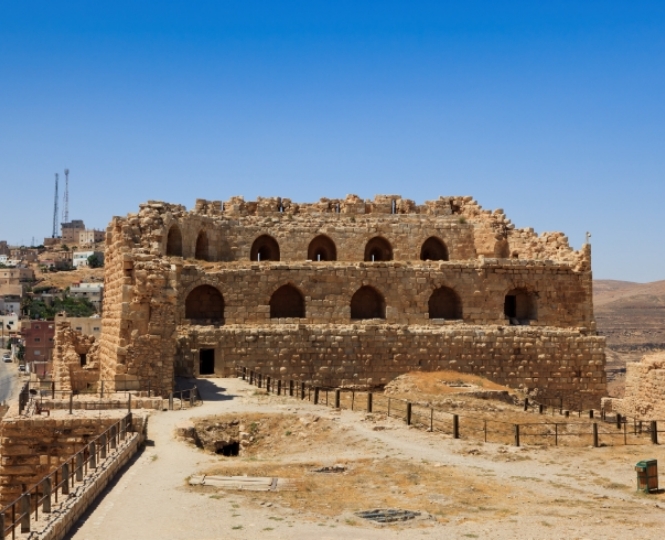Al Karak's history dates back to the Late Bronze Age - Early Iron Age, making it a significant part of the Kingdom of Moab. The iconic Al Karak Castle, rebuilt by the Crusaders in the 12th century, played a crucial role during their rule in the region. Saladin's conquest marked the end of the Crusader era, leading Al Karak through various political shifts under the Ayyubids, Mamluks, Ottomans, and finally, the Hashemite Kingdom of Jordan.
The city was known by various names such as Kir Moab, Kir Hareseth, Crak des Moabites, and Le Pierre du Desert to the Crusaders. The name Al Karak is believed to be derived from the Aramaic 'Karka,' meaning fortified town. The biblical references to Kir Hareseth in Isaiah add a layer of historical and cultural significance to the city.

Al Karak’s historical significance is documented in historical archives and archaeological artifacts. Its strategic location as surrounded by valleys was documented in the writings of Ibn Battuta, the 14th-century Moroccan explorer. The Mesha Stele, a Moabite Stone that contains Canaanite inscriptions of the King of Moab, dates back from 840 BC. Today it is housed in the Louvre Museum in Paris. Meanwhile, the Madaba Map is a 6th Century floor mosaic on the floor of the Byzantine church in Madaba, St. George’s Orthodox Church. The map clearly outlines Karak as an important landmark of the Holy Land.
Al Karak Governorate, encompassing an area of 45 km, offers a captivating blend of diverse landscapes and geological wonders. Stretching from the Dead Sea Basin in the west to the eastern desert, the region showcases varied topographical and climatic conditions, making it a haven for nature enthusiasts.
The dramatic landscape along the Dead Sea rift valley, with Mujib Biosphere Reserve to the north and Fifa Nature Reserve to the south, forms the backdrop for an array of outdoor activities. The governorate's nature reserves boast an abundance of wadis, canyons, and gorges, attracting a myriad of bird species and wildlife. Positioned at the crossroads of Europe, Asia, and Africa, Al Karak serves as a crucial point for bird migration, making it a paradise for birdwatchers.